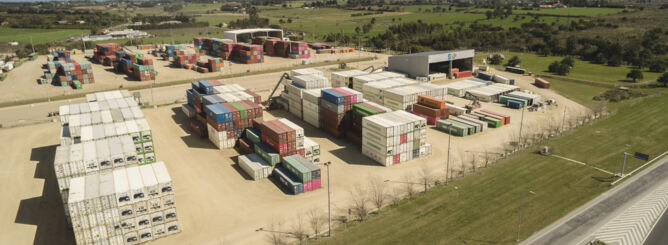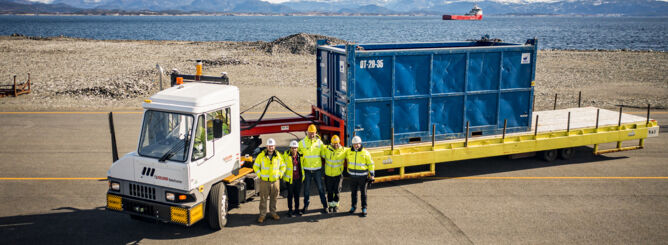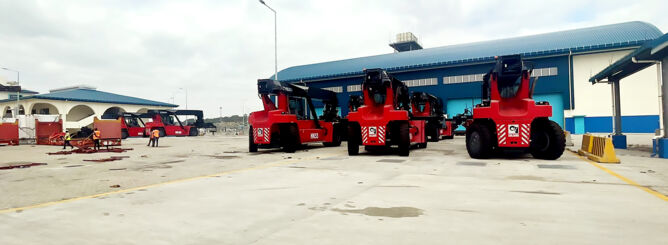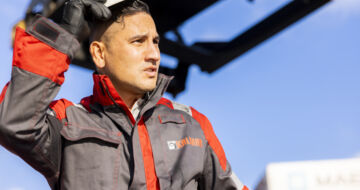Inspect, repair, teach
One piece of Kalmar equipment is made up of thousands of parts. The challenge is to make sure all the parts are functioning to keep the equipment humming. With superb technical skills, Kalmar’s professional service team is rather like a doctor, on call and ready to diagnose and repair. Kalmar Product Technical Support Manager, George Ma, is one of the very best. Called the ‘Flying Doctor’ he travels the Asia Pacific region helping Kalmar customers to get their broken equipment back up and running again.
George joined Kalmar in 1997. He has been posted in Taiwan, Hong Kong and Malaysia Sabah. In 2003, he began travelling to China, South Korea, Singapore, Malaysia, The Philippines, Thailand, Taiwan and Japan, assisting local service teams with complex technical problems.
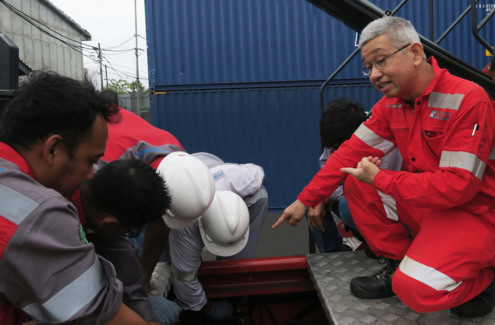
Inspiration from traditional Chinese medicine
George has developed his own unique troubleshooting techniques based on extensive hands-on field experience and his application of Chinese medical methodology. “My approach is inspired by traditional Chinese medical practices of the Four Diagnostic Method. ‘Inspection’ is a meticulous examination of the equipment and its appearance. ‘Auscultation and Olfaction’ is listening to any sounds the equipment makes and paying attention to unusual odours that would indicate worn out components. ‘Inquiry’ means checking with operators and drivers about the conditions and usage of equipment. ‘Palpation’ is a diagnosis to find the best solution to the problem. In its own way, the equipment communicates with us -- we only need to listen and observe. By paying attention to every tiny detail, a solution can be found.”
Finding the source of the problem
Over the years, George has fixed hundreds of pieces of equipment and machines. One of the most challenging was a broken down reachstacker at a customer site in Singapore in 2012 where the local service team was unable to find the cause of the malfunction.
First, George made a careful examination of the equipment, including a check for unusual smells that could indicate malfunctioning parts. Next, George took it for a drive, but the reachstacker stopped after going just 10 feet (3.5 metres). He realised that the hand brake was automatically releasing when the machine was driven. Thinking it could be a problem with the electrical components, George used the diagnostic menu in the machine display and saw that there was no feedback signal in the circuit for the parking brake. He checked the lines inside the pressure sensor, realised the insulator was broken and the wire would sometimes touch the metal surface leading to a short circuit. With the problem diagnosed, new wires were installed and the equipment was back up and running.
"This case is a good example to show how all the working parts are interconnected and how the principles of traditional Chinese medicine can be applied." The whole is the sum of its parts. "We cannot conclude that it’s an electrical or mechanical problem by viewing them separately. Rather, we need to think about both types of related problems and we need to know the structure of the equipment in order to find the source of the problems. The most important thing is to get the customer’s equipment operational again in the shortest possible time,” says George.
Prevention is the key
George believes that prevention is better than a cure. Not only does he help customers fix their equipment, he also provides product training. “I conduct the product training at customer sites when they purchase new equipment from Kalmar. It is crucial to teach the operators and drivers how to drive the equipment properly and the importance of regular inspection and maintenance of the equipment.”
George’s troubleshooting experience and technical knowledge is vitally important in our industry. He passes on his knowledge to younger generations and local service teams. George often researches similar case studies, studying photos and other information about parts to find the best solutions. His colleagues say, “George is not only an excellent ‘flying doctor’, but he’s also a great teacher. If you have any questions regarding our equipment, he will be there for you.”
Name George Ma
Title Product Technical Support Manager
Business Unit Product Technical Support, Kalmar Asia Pacific
Location Hong Kong
Career Service Supervisor (1997), Site Engineer (1998), Product Support Supervisor (2000), Assistant Manager, Product Support (2001), Manager, Product Support (2007)

